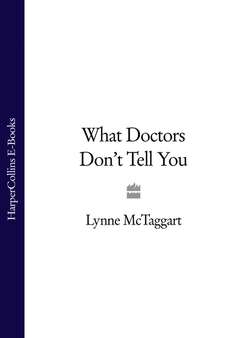Читать книгу What Doctors Don’t Tell You - Lynne McTaggart, Lynne McTaggart - Страница 19
CAT SCANS
ОглавлениеAs with most other industries, the advent of the computer has taken the medical x-ray business to a new level. In the 1970s, computed axial tomography, now usually known as CAT, or CT, scans, revolutionized diagnosis, particularly of bones, blood vessels and soft tissue of the body, offering pictures with up to 20 times the detail of ordinary x-rays. It has now made it possible to scan for diseases of the abdomen, lung, heart, liver and pancreas, and even for early osteoporosis.
Adapted from an image-processing system developed for the Apollo moon landings, CAT scans take a 360-degree series of cross-sectional x-ray images from multiple angles – up to 30 shots – by passing a pencil-thin beam through a particular portion of the body, sometimes with the use of a contrast agent. An X-ray tube on a moveable ring revolves around your body, taking individual ‘slices’ of images.
This information is then passed through a computer, which reconstructs the slices into a three-dimensional image on a video screen, allowing the operator to see this portion of the body from any angle. It is also stored so that the doctor can take photographs of the video screen or call up the information in the future. Your problem is that now that your doctor has computerized diagnostic toys at his disposal, he’s more likely to want to play with them. Although doctors have attempted to claim that CT scanning reduces the need for other tests such as brain scans, arteriography or exploratory surgery, this may be a false saving.
While no doubt CAT scanning represented the height of 20th-century technology, it also poses far more risks than most other tests, blasting you with far higher doses of radiation. In 1991, the NRPB concluded that CAT scans accounted for only 2 per cent of the total UK x-ray examinations but 20 per cent of the overall collective dose, and so were the largest single source of exposure from x-rays.87 This risk is magnified if you don’t stay stock still during the half-minute or so of the test and it has to be repeated. In Japan nearly one-eighth of the population was getting CT-scanned as far back as 1979. Radiation from a single body shot is now considered comparable to that of the low-dose atomic bomb survivors from Hiroshima.88
CAT scans are particularly dangerous when used on children. Despite their reduced size, they may receive adult-sized doses of x-rays, up to five times of what is necessary, leaving them prone to cancer. In the US, where 600,000 children under 15 receive CAT scans every year, an estimated 500 die as a result.89 Furthermore, although all the early studies showed that CAT scans reduced diagnosis time, helped doctors to understand their diagnosis, reassured doctors about their diagnosis or treatment plans and avoided the need for other tests, very few demonstrated that this knowledge in any way reduced illness, shortened hospital stay or prevented death.90
There are also questions of accuracy. Despite the dangers of high-dose radiation in children, particularly of their sexual organs, it is often used to diagnose cerebral (brain) hernia after lumbar puncture for meningitis. Nevertheless, one study found that one-third of children with hernias were misdiagnosed as normal.91 As with other contrast mediums, the dyes used can permanently damage the kidneys.92
Despite any real demonstration of value, other than as a diagnostic toy, use of CT scanning has moved briskly apace. Patients who have a seizure are scanned, even before a clinical history is taken, to rule out alcohol withdrawal.93 So beloved is this gadgetry that it has even been used to research the cause of the common cold, the researchers concluding that their study patients had – wait for it – swelling of the mucous membranes.94 Besides megadoses of radiation, CT scans (indeed all x-rays) have long been known to cause cataracts and other lens opacities, such as nuclear sclerosis,95 and could affect thyroid function.96
